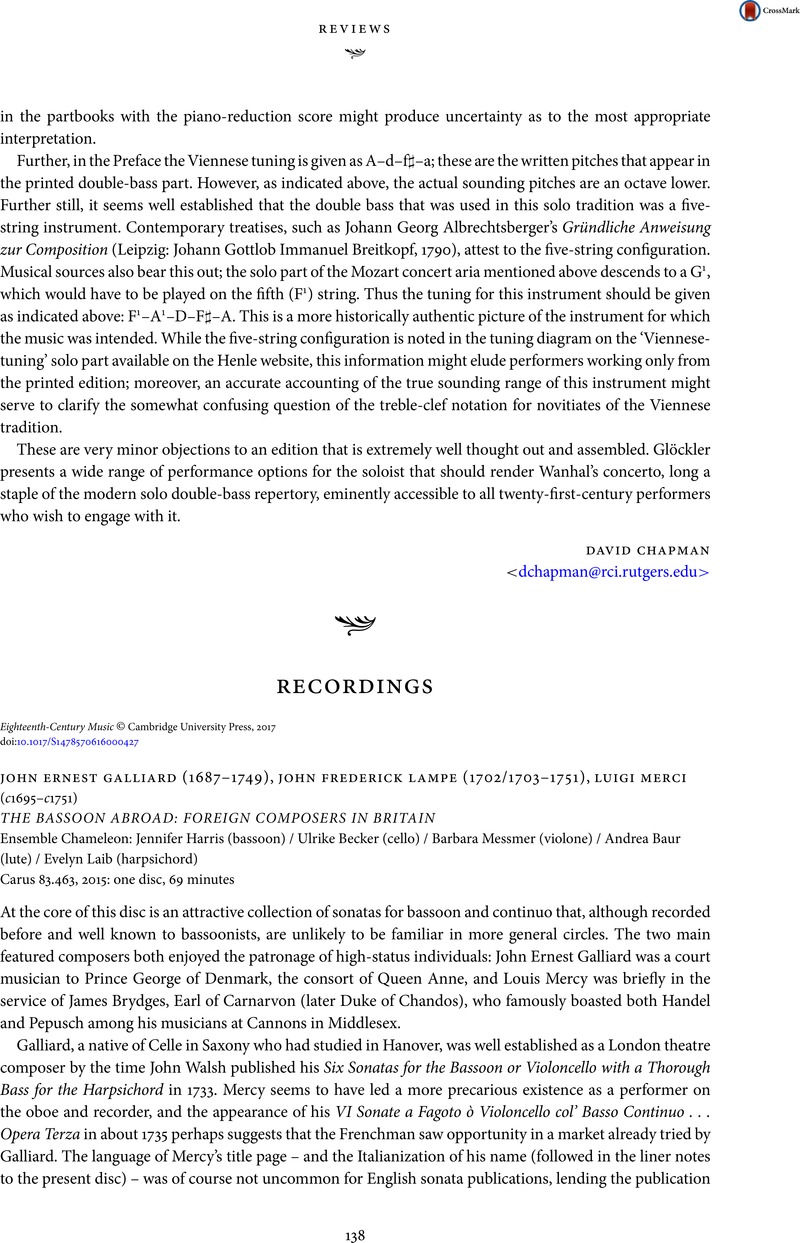No CrossRef data available.
Article contents
JOHN ERNEST GALLIARD (1687–1749), JOHN FREDERICK LAMPE (1702/1703–1751), LUIGI MERCI (c1695–c1751) THE BASSOON ABROAD: FOREIGN COMPOSERS IN BRITAIN Ensemble Chameleon: Jennifer Harris (bassoon) / Ulrike Becker (cello) / Barbara Messmer (violone) / Andrea Baur (lute) / Evelyn Laib (harpsichord) Carus 83.463, 2015: one disc, 69 minutes
Published online by Cambridge University Press: 16 February 2017
Abstract
An abstract is not available for this content so a preview has been provided. Please use the Get access link above for information on how to access this content.

- Type
- Reviews: Recordings
- Information
- Copyright
- Copyright © Cambridge University Press, 2017




